Arctic temperatures, gusty winds and waves reaching several meters. In addition, the constant danger lurking on the part of the Germans. All this made the service on ships sailing to Murmansk a real torment.
Allied Arctic convoys to help the Soviet Union had two routes. The first, the summer one, ran north of Iceland, bypassed it from the west and led across the Barents Sea to Murmansk and Arkhangelsk. The second, winter one, was much shorter, but also more dangerous. The sliding of the floating ice border to the south meant that the road was approaching the shores of German-occupied Norway . And there were their numerous naval and air bases. 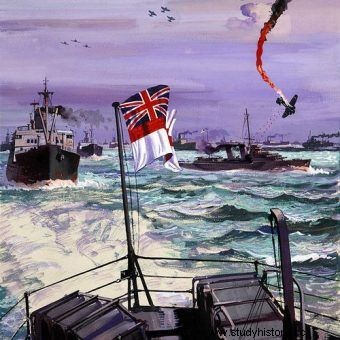
Seafaring everyday life
Service on ships and ships sailing in Murmansk convoys was a real challenge for the sailors. It was nothing like the experiences of their colleagues in the Mediterranean or even in the North Atlantic. Often she was accompanied not only by struggles with the enemy, but also with the hostile element and her own weaknesses. In order to survive in such conditions, one had to constantly be on guard.
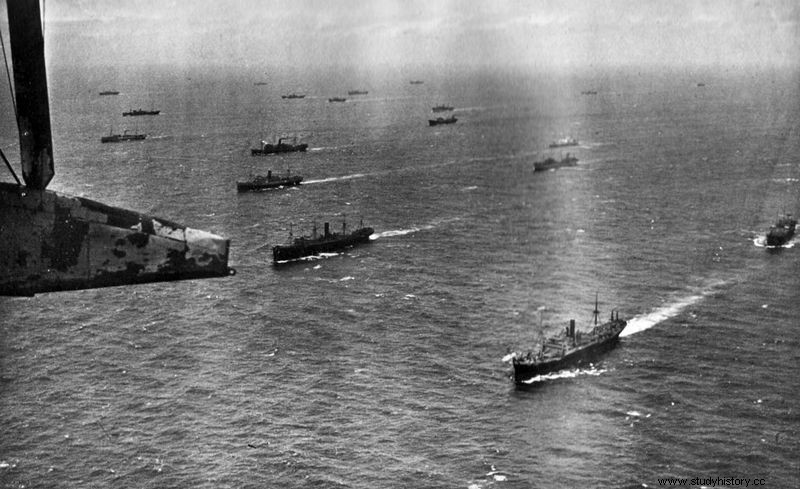
The danger to the Allies in the convoys across the Atlantic was nothing compared to what might have happened on the voyage to the Soviet Union. The photo shows one of the Atlantic convoys (source:public domain).
The worst was on small escorts, rarely adapted to such extreme tasks. Various negligence was severely avenged then, most of all the deficiencies in the proper protection of all openings. The sea was ruthless in stormy winter conditions. Lieutenant Leadbetter, an officer in the HMS Oxlip corvette, recalled this:
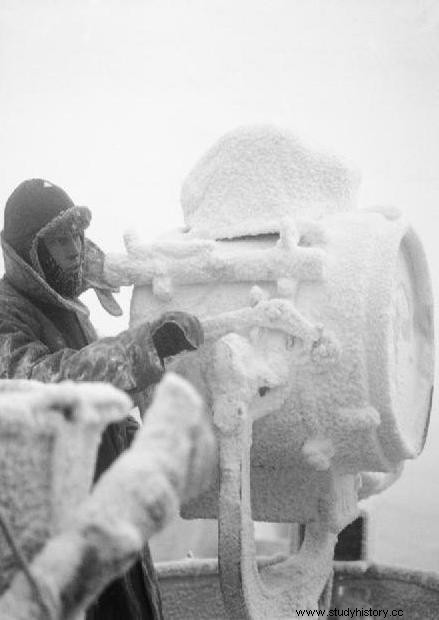
Arctic temperatures meant that ships and convoys to the Soviet Union quickly became covered with a thick layer of ice (source:public domain).
In the rhythm of the ship's tilting, the water poured madly from side to side. She tore the newly laid cork carpets from the deck, lifting them along with the dishes, bedding, hammocks and sailor sacks.
There was an atmosphere of chaos and unhappiness. Many of the crew were too seasick to worry about what was happening and lay in a state of numbness.
The farther north it got, the worse it got. All equipment on board was covered with ice in freezing temperatures. It immobilized the rotating turrets of the guns and torpedo apparatuses, caused the depth charges to freeze to their launchers . The stability of ships significantly deteriorated. Whenever conditions allowed, sailors fought the ice with pickaxes, shovels and hot steam. The safety of not only theirs, but also the protected ships depended on the efficiency of their weapons.
Ice watches
The situation looked no better on the transporters. Loaded to the brim with tanks, planes and ammunition, they swayed no less than escorts, and serving them was just as arduous. The watches were the worst. The seamen spent several hours outside looking for danger.
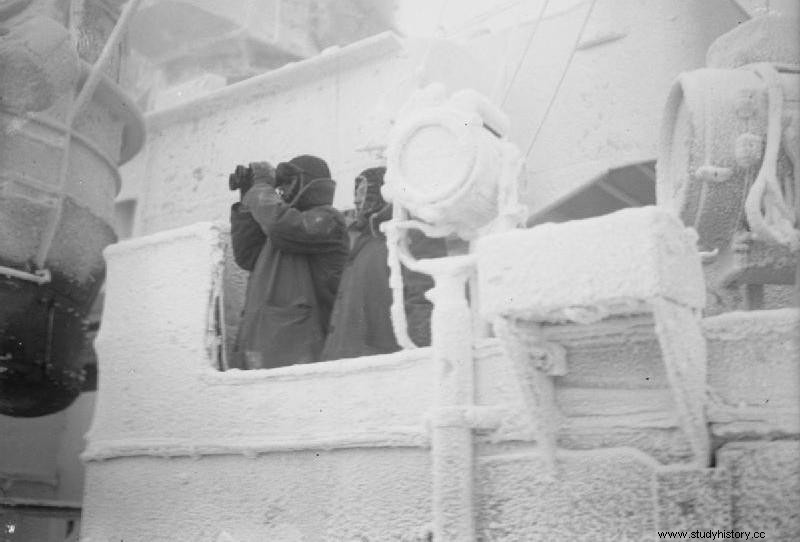
Watching in such conditions was a real nightmare (source:public domain).
They were exposed to frost, snow, and cold splashes of waves that quickly turned into ice. The deck then became a real ice rink and ropes had to be unfastened to create communication routes that would allow people to move around. Flakes of snow thrown in the wind clumped into snowballs the size of a human fist. They hit people in the face, bruised and swelled.
Staying in such harsh conditions required appropriate clothing. Sailors from the Murmansk convoys had sheepskin coats with hoods made of artificial fur, which, however, were considered a poor covering. Camel wool coats were praised for this.
A perfect headgear was a white sheep's wool hat resembling a balaclava. She was also lined with faux fur and covered her entire face, with only openings for the eyes, nose and mouth. Despite these advantages, it significantly limited audibility, which is why it was rarely used by observers and signalers.
The hands were protected by lightly insulated canvas gloves. They were specially soaked with fish oil so that they did not stiffen too much in the frost, but they quickly got wet and covered with ice: cold from all over the Arctic Circle was accumulating in them . A life jacket was compulsory during the service on board. Sailors liked to wear them because they perfectly protected against the wind. Instead, the wearing of English helmets was avoided, at least in the merchant fleet. Their wide steel "brim" made the strong and fierce winds shake the head sharply.
In a cup
The inside of the ship was not as safe and warm as it might seem. Condensing water vapor meant that the cabins were constantly musty and damp. Under such conditions, with violent rocking, people became vexed.
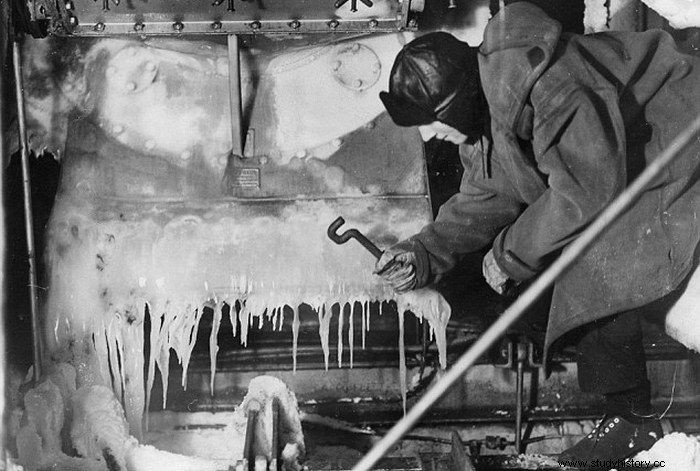
During the Arctic convoys, ice was literally everywhere (source:public domain).
One of the seafarers mentioned that in the pipelines of merchant ships: water froze, it was impossible to wash, it was impossible to sleep and it was impossible to keep warm. Everything inside was covered with ice .
The higher temperature in the cabins caused additional torture. The skin of the face, exposed to the frost winds, was cut and cracked. After being outside for a long time, it often resembled an ice mask. The heat made my cheeks and eyelids swell, stinging unbearably.

HMS Trinidad. Henryk Gorzechowski served on its board (source:public domain).
The sailors tried to deal with it by rubbing the face with fish oil or lard to soften the epidermis. Wraps made of towels soaked in lukewarm water or tea also brought some relief.
Man overboard!
While working on board, seamen often secured themselves with ropes. This was especially true of the operation of anti-aircraft guns at open positions. Nevertheless, there were accidents anyway. The artilleryman Henryk Gorzechowski had a very unpleasant adventure, in March 1942 he served on the British cruiser HMS Trinidad.
The ship was then in the cover of the PQ-13 convoy. Once upon a time, a Pole did not fasten his safety belts at his anti-aircraft Bofors and during a violent maneuver in the Barents Sea he flew overboard as if from a catapult . This is how he recalled his meeting with death later:
Waterproof boots, woolen sweaters, socks, uniform, that unfortunate jacket and everything I was wearing was soaking up the arctic water voraciously. (...) The terrible cold bit the whole body. (...) The rough waves were throwing me incessantly. There are not many moments to live, it is winter and the waters of the Barents Sea ...
However, fate smiled at Gorzechowski, as he was accidentally spotted from the deck of a British destroyer. The Pole, as he wrote, has already "covered in ice in the water" . When it hit the side of the destroyer while being hauled up, ice crystals sprinkled from its clothes.
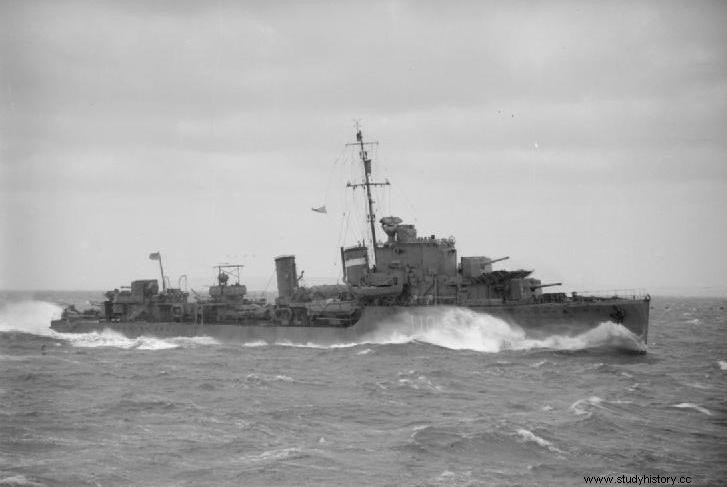
HMS Intrepid was one of the five destroyers escorting the PQ-13 convoy (source:public domain).
British sailors took great care of our compatriot. They poured rum on his body abundantly and rubbed it violently to restore circulation to his frozen limbs. A large cup of rum also went down the lucky man's throat.
American support
As Samuel Eliot Morison states in the book "The Battle of the Atlantic":
America's first merchant ship, The that set off (...) was the 3,800-ton freighter Larranga. He left Boston the day before the attack on Pearl Harbor (...). In Iceland, he joined the PQ-8 convoy and left there on January 8, 1942. (...) The convoy arrived in Murmansk on January 19 .
Most of the American ships were new and modern, but there was another problem, because the morale of the crews was upset. Yankee sailors, despite being generously paid for their work in difficult conditions, were susceptible to German radio propaganda, the so-called Lord Hau-Hau. In extreme cases, there were even acts of sabotage on the part of the crew or open rebellion on ships.
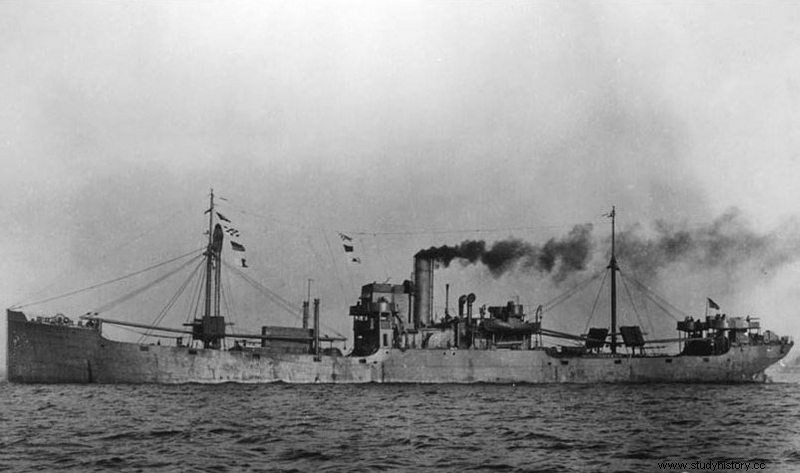
The first American ship to sail in a convoy to the Soviet Union was the freighter "Larranga" (source:public domain).
It happened so, inter alia, on the old American tramp "Troubadour". When the sailors refused to go to Russia, its commander, Captain George Salvesen, had to call in armed artillerymen from the US Navy. Only then was the situation under control and the ship could go to sea.
The British had similar troubles, especially among the "colored" crews. Due to shortages in the ranks of the sailors, even convicts from the Scottish Barlinnie Prison were recruited to work. The riots broke out, incl. on the Commodore ship "Empire Archer", in the convoy JW 51B. Only the decisive attitude of the unit commander Captain Maughan and his officers ended the rebellion.
Death Convoys
Russians now tend to downplay Allied Lend-Lease supplies to the USSR during the Second World War. About a quarter of them were carried out via the Arctic road. Statistically, it was the deadliest convoy route of this war.
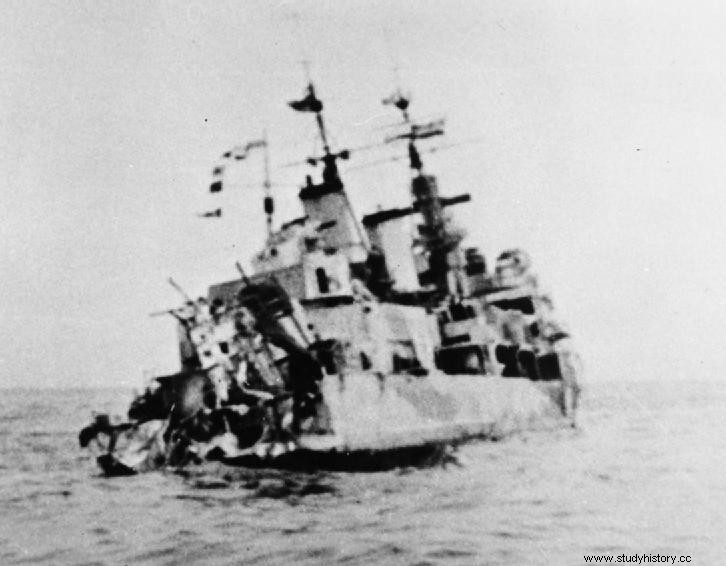
Arctic convoy statistics were inexorable for the Allies. The photo shows the torpedoed HMS "Edinburgh" (source:public domain). Click to enlarge.
The Allies lost 18 warships and 1,944 sailors there. The merchant fleet decreased by 87 ships and 829 crew members. It is worth remembering that this is a trail marked with blood, including Polish sailors.
